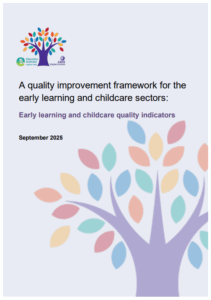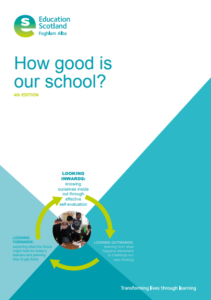Playing, learning and developing p28- Quality of interactions
Careful observation allows us to interpret children’s interests and provide opportunities to extend their thinking without directing their play. We use a variety of approaches to respond to children’s cues to support development of self-regulation, empathy, confidence, creativity and curiosity.
p29
We use observations of individual children’s patterns of play to plan, support, challenge and extend their learning. This enables children to make progress at their own pace.
Careful observations and effective assessments recognise and promote children’s progress and achievements. Any additional supports are identified, planned for and implemented.
p31
How effective are our processes to evaluate children’s development, progress and achievements? How well does this information gathered about children’s progress inform our planning and reporting to parents/carers and others?
Learning, Teaching and Assessment p41 – Planning and assessment
Working with parents/carers, children, partners and colleagues, we gather a relevant range of information about children and their prior learning. We are highly skilled in observing and documenting children’s significant learning and achievements. Together this robust assessment information provides reliable evidence about children. We use this to form a holistic picture of the child and make accurate judgements about children’s progress and future learning
p43
In what ways do we use our assessment information to inform planning for children’s learning? How effective are we at involving parents/carers?
How robust are our processes for tracking and monitoring to identify children’s strengths, individual needs, or gaps in their experiences or learning?
Wellbeing, inclusion and equality p55 – Identifying and assessing learning needs and targeted support
Children’s individual learning needs are identified early through careful observation and effective analysis of robust assessment information from a range of sources. This includes working in close partnership with parents/carers and colleagues to take full account of children’s prior learning and needs.



